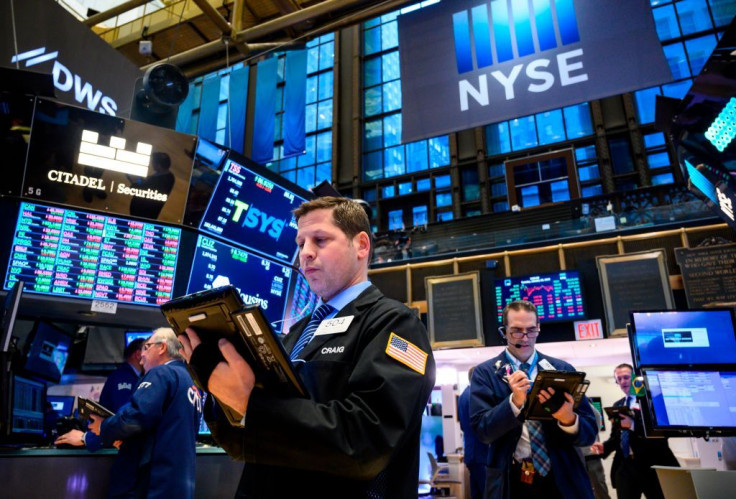'Currency Manipulator': How Does Lower China Yuan Affect US And Stock Market?

Now that China has devalued the yuan, could it next weaponize and sell its $1.1 trillion in U.S. Treasury holdings -- the so-called “nuclear option” -- to inflict even more damage on the already dented U.S. economy?
The answer to this conundrum might rest on the actual effects of the yuan devaluation Monday, which could also signal the start of a currency war. And fears of a recession are rising in tandem.
As expected, the Trump administration reacted to the yuan’s devaluation by declaring China a "currency manipulator," a term that doesn’t mean much given it’s largely symbolic. This means that "as a result of this determination, Secretary Steven Mnuchin will engage with the International Monetary Fund to eliminate the unfair competitive advantage,” according to a statement by the U.S. Department of the Treasury.
The immediate effect of China’s devaluation of the yuan will be to stymie Trump’s efforts to coerce China into accepting a trade deal on Trump’s terms. The devaluation will help Chinese manufacturers offset Trump’s higher tariffs by making their goods cheaper in the world market for buyers using U.S. dollars. This hurts U.S. manufacturers and further pressures inflation.
It will also stoke further volatility in equities by sending a clear message the trade war between China and the U.S. is indeed a trade war and not a mere spat as Trump likes to paint it. In the long-run, China’s devaluation makes a U.S. recession by 2020 or 2021 all the more likely.
Analysts rightly note the escalating U.S.-China trade war is unnerving investors already shaken by a decelerating global economy and falling U.S. corporate profits. A portent of the worst to come is Wall Street’s performance on Monday when the Dow Jones Industrial Average plummeted 767.27 points, or 2.9%, to close at 25,717.74. It sank by as much as 961.63 points at one point.
The S&P 500 plunged nearly 3% to 2,844.74. The NASDAQ Composite spun downwards 3.5% to 7,726.04.
It was the worst percentage drop for all three indices this year. The S&P 500 is now more than 6% below its record high attained only last month.
The NASDAQ fell for a sixth straight day -- its longest losing streak since late 2016. The S&P 500 also recorded a six-day losing streak. On the other hand, the Dow declined for a fifth straight day.
Monday's bloodbath continues a sell-off that began last week when president Donald Trump ordered new tariffs of 10% on $300 billion of Chinese goods to the U.S. effective Sept. 1.
Stock futures fell Monday, implying a 480 point drop or higher might be in the cards for Tuesday. Analysts foresee continued pain on Wall Street for the rest of the week.
“A 3% drop in a day is very significant, and you’re seeing sizable moves in every major foreign market,” said Rich Weiss, chief investment officer of multi-asset strategies at American Century Investments.
“I am surprised at the market’s surprise at China’s retaliation. We started a fight, and when the opponent punches back, I’m not sure why we’re surprised.”
In Asia, indices lost more than 1%. The loss intensified as volatility swept through Europe and to the Americas. Investors then fled to the relative safety of U.S. government bonds, which sent yields down sharply.
The yield on the 10-year Treasury note fell to its lowest level since Trump’s 2016 election. It fell to 1.72% from Friday’s 1.85%. The yield on the two-year note, which is more influenced by interest-rate moves from the Federal Reserve, sank to 1.58% from 1.71%. Both are unusually large moves.
Yields on the 10-year Treasury note rise with expectations of stronger economic growth and inflation. Such isn’t the case after the yuan’s devaluation.
© Copyright IBTimes 2025. All rights reserved.





















